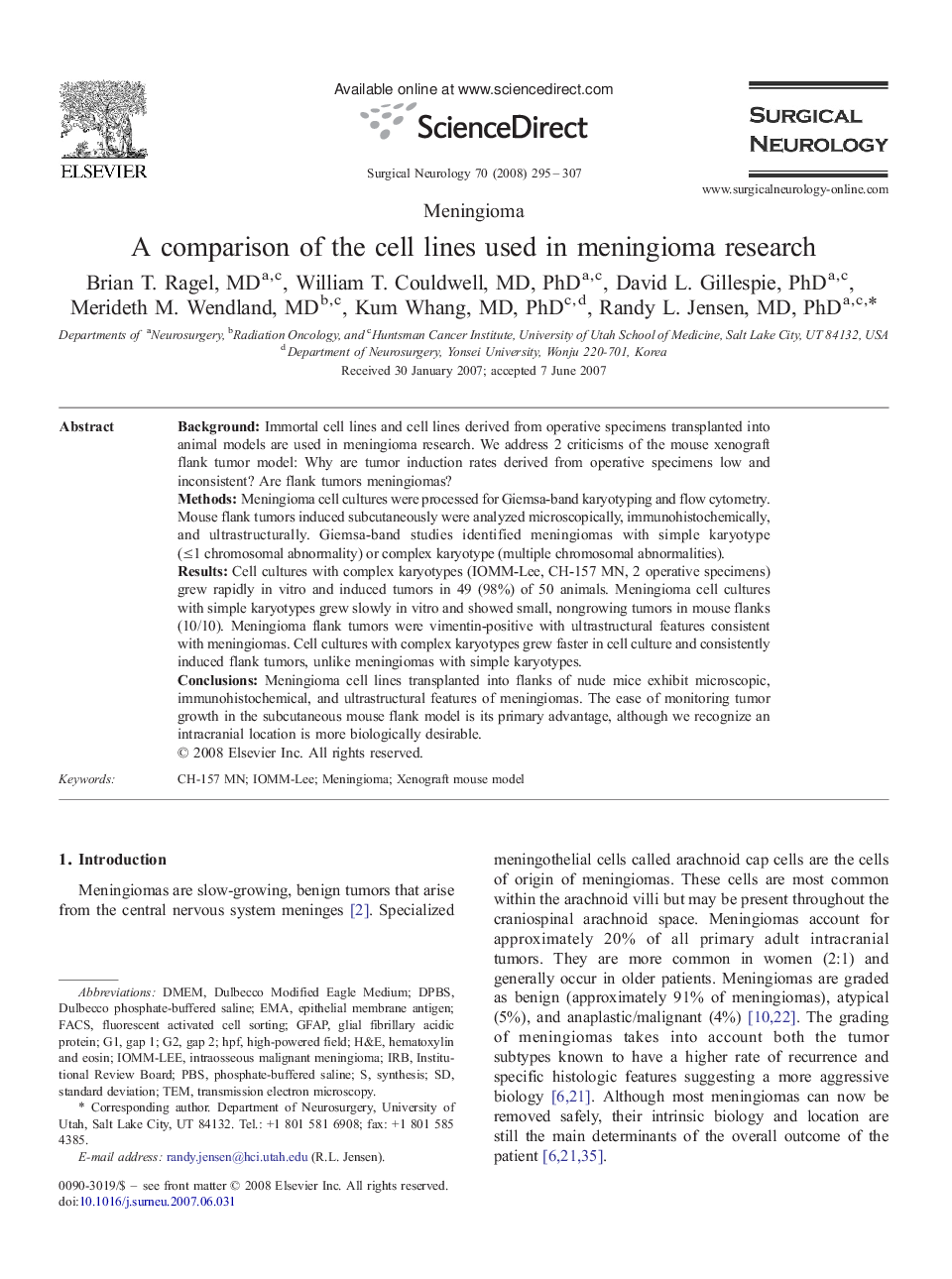| کد مقاله | کد نشریه | سال انتشار | مقاله انگلیسی | نسخه تمام متن |
|---|---|---|---|---|
| 3092789 | 1190521 | 2008 | 13 صفحه PDF | دانلود رایگان |

BackgroundImmortal cell lines and cell lines derived from operative specimens transplanted into animal models are used in meningioma research. We address 2 criticisms of the mouse xenograft flank tumor model: Why are tumor induction rates derived from operative specimens low and inconsistent? Are flank tumors meningiomas?MethodsMeningioma cell cultures were processed for Giemsa-band karyotyping and flow cytometry. Mouse flank tumors induced subcutaneously were analyzed microscopically, immunohistochemically, and ultrastructurally. Giemsa-band studies identified meningiomas with simple karyotype (≤1 chromosomal abnormality) or complex karyotype (multiple chromosomal abnormalities).ResultsCell cultures with complex karyotypes (IOMM-Lee, CH-157 MN, 2 operative specimens) grew rapidly in vitro and induced tumors in 49 (98%) of 50 animals. Meningioma cell cultures with simple karyotypes grew slowly in vitro and showed small, nongrowing tumors in mouse flanks (10/10). Meningioma flank tumors were vimentin-positive with ultrastructural features consistent with meningiomas. Cell cultures with complex karyotypes grew faster in cell culture and consistently induced flank tumors, unlike meningiomas with simple karyotypes.ConclusionsMeningioma cell lines transplanted into flanks of nude mice exhibit microscopic, immunohistochemical, and ultrastructural features of meningiomas. The ease of monitoring tumor growth in the subcutaneous mouse flank model is its primary advantage, although we recognize an intracranial location is more biologically desirable.
Journal: Surgical Neurology - Volume 70, Issue 3, September 2008, Pages 295–307